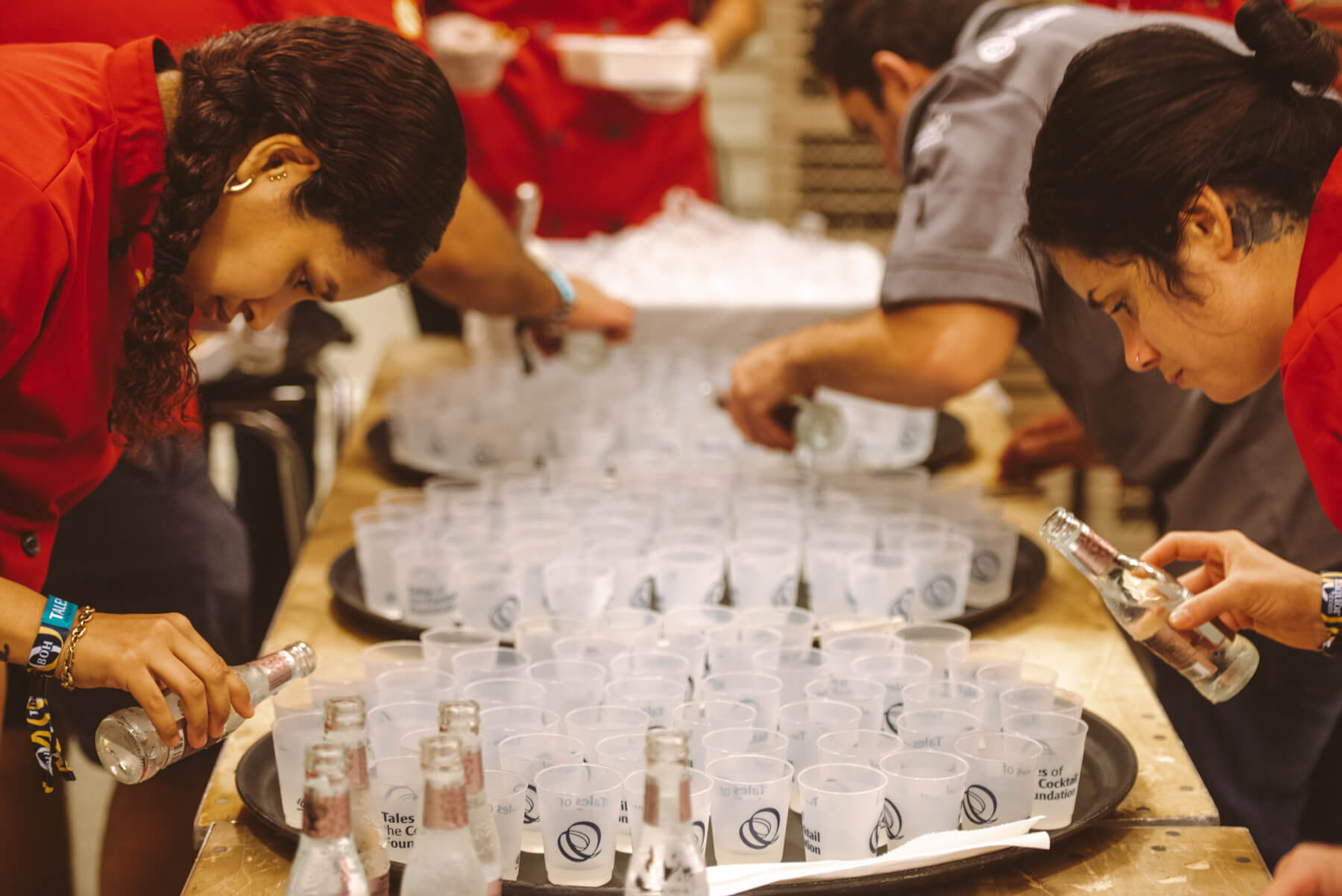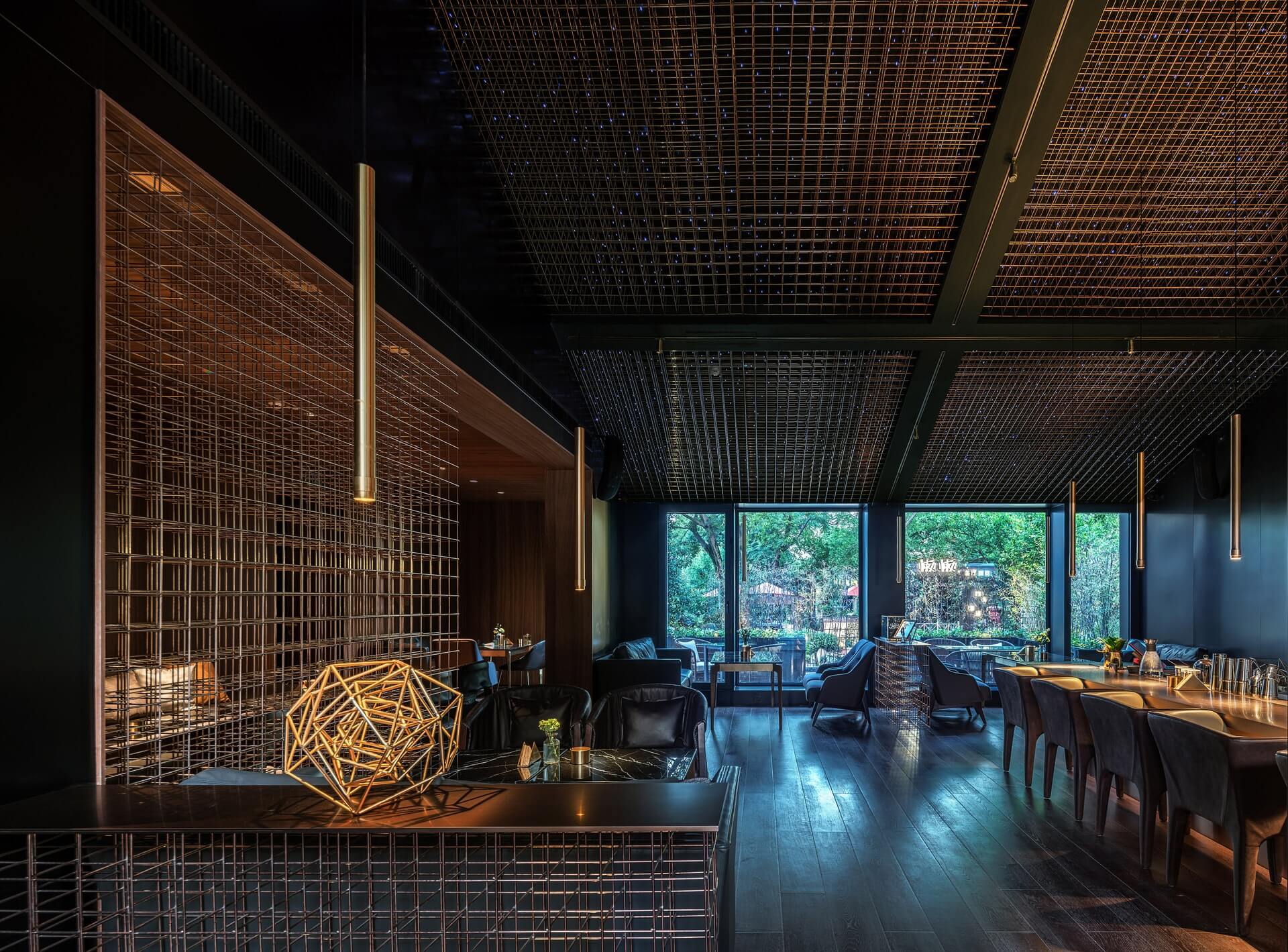Plants Dominate 2022 National Restaurant Association Show
by David Klemt
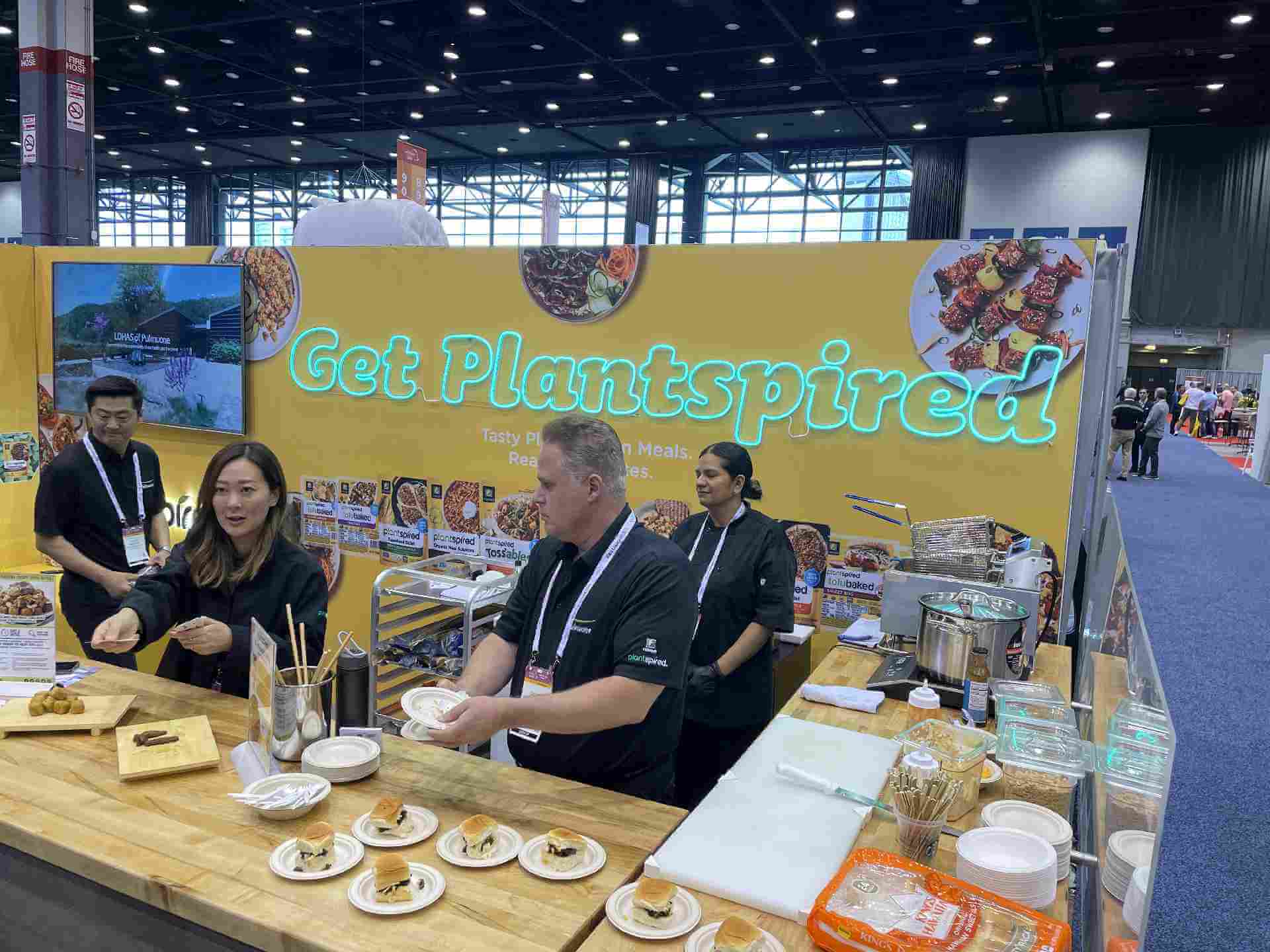
The National Restaurant Association Show is back in a big way, and meat alternative brands are establishing themselves as much more than a trend.
In particular, plant-based brands made their presence known in the Lakeside Center.
However, some big companies also showcased their animal alternatives in the South Building. Among them, Beyond and Daiya.
Notably, Daiya brought with them their freshly reformulated cream cheese alternative. They also had a creamy, flavorful queso at their booth.
Chik’n
Unsurprisingly, meatless chicken—often stylized as “chik’n”—dominated the NRA Show floor.
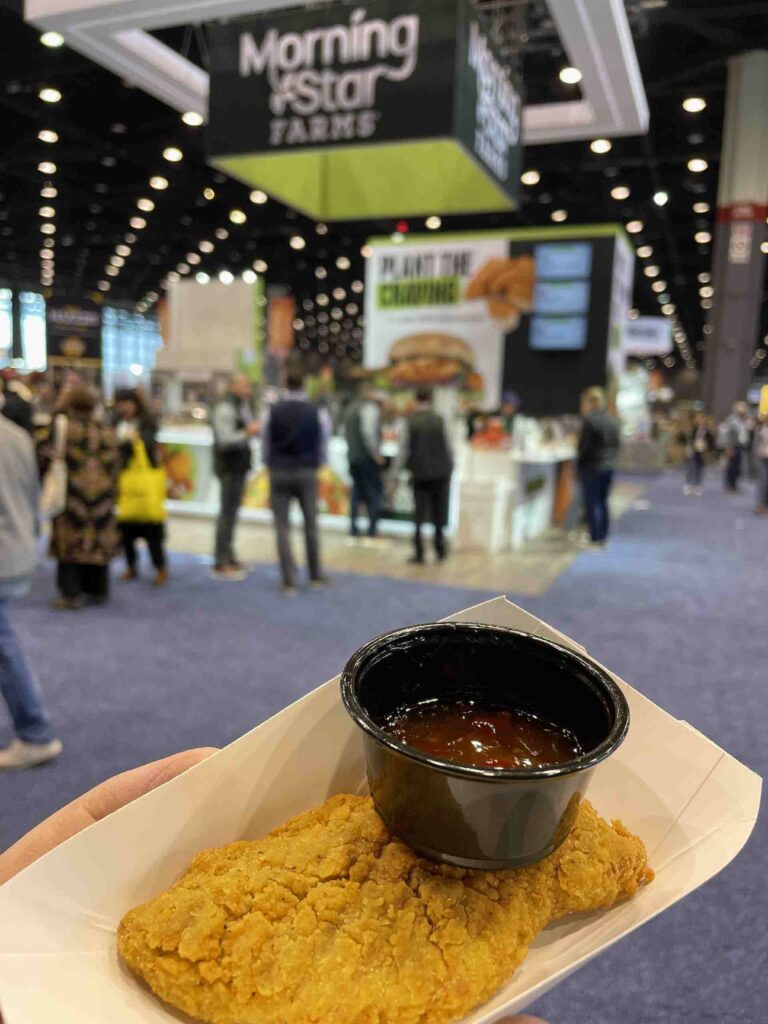
However, exhibitors showed off more than just nuggets and fingers. This year was more about innovation.
For example, more than one company is rolling out chik’n wings. Of course, there are no bones, so they’re more akin to nuggets.
Essentially, these chicken alternatives are boneless “wings.” And as we all know, boneless chicken wings are just chicken chunks with better marketing.
Really, it’s the seasoning, heat, and shape that define the chik’n wing. At least, that’s what they are for now. I expect further innovation and refinement for these wings.
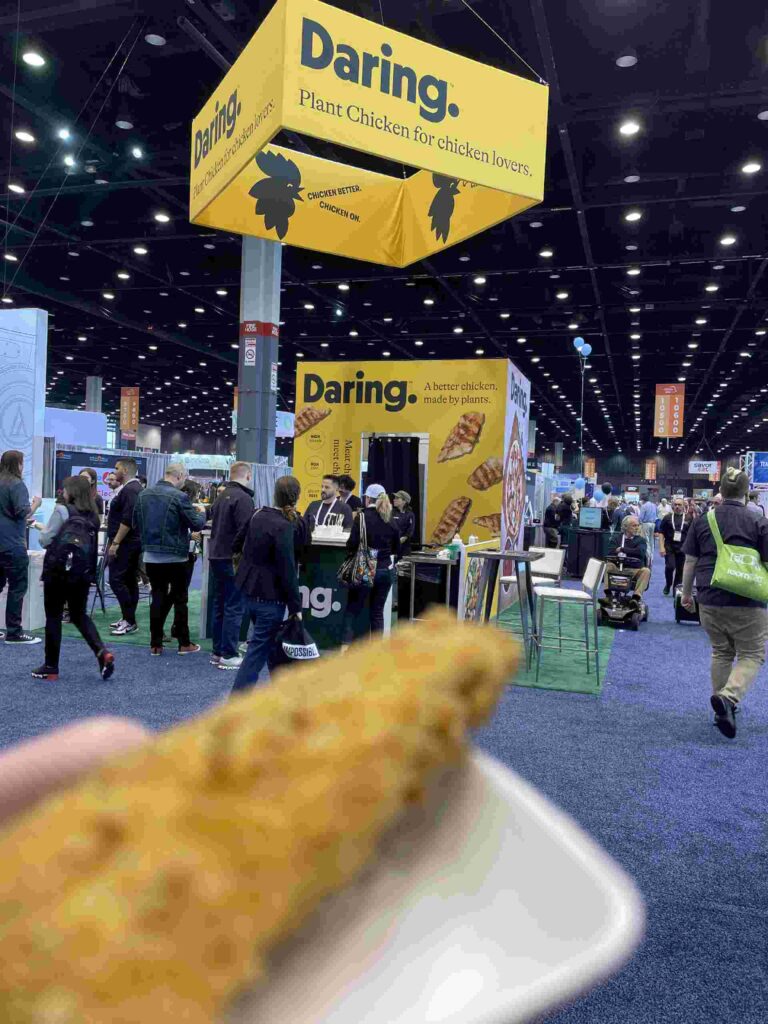
Interestingly, some brands appear to be taking on the chicken breast. Now, there weren’t many meatless companies featuring these on the NRA Show floor. Still, there were a couple and their products looked the part.
The textures are also quite close to their meaty counterparts. But I think there’s still work to do.
Plant-based Seafood
Of all the plant-based alternatives, seafood was the star. The CEOs of big brands have been working on these products for several years.
Well, we certainly saw the fruits of their investments at this year’s NRA Show.
Fish fillets, crab cakes, fish patties (including salmon), fish sticks, tuna flakes, shrimp… All were available to sample at exhibitor booths.
Crucially, the flavors and textures were close to the real thing. However, the shrimp mostly relied on being coated in seasoning to mimic their animal-based counterpart.
That said, seeing so many brands committed to bringing plant-based seafood to market was impressive.
Further, the seafood-focused companies are touting the eco-friendliness of their products. Plant-based seafood, they say, can help stop overfishing and stop the reduction of biodiversity in our oceans.
If they appeal to consumers and reduce harm to the planet, these products could perform well in foodservice. Good for the planet and good for the bottom line seems like a win-win to me.
Takeaway
As the 2022 NRA Show showed, plant-based is no longer a trend. These products ceased being a fad long ago.
Now, it’s clear the category is here to stay. The products categories like chik’n are seeing more innovation. Seafood will improve. Other meat alternatives are also improving.
Of course, whether they’re healthy, well, that’s another story. However, consumers seem to want these items regardless.
One thing is obvious, though: The plant-based category is proliferating and will soon reach ubiquity.
Images taken by author

